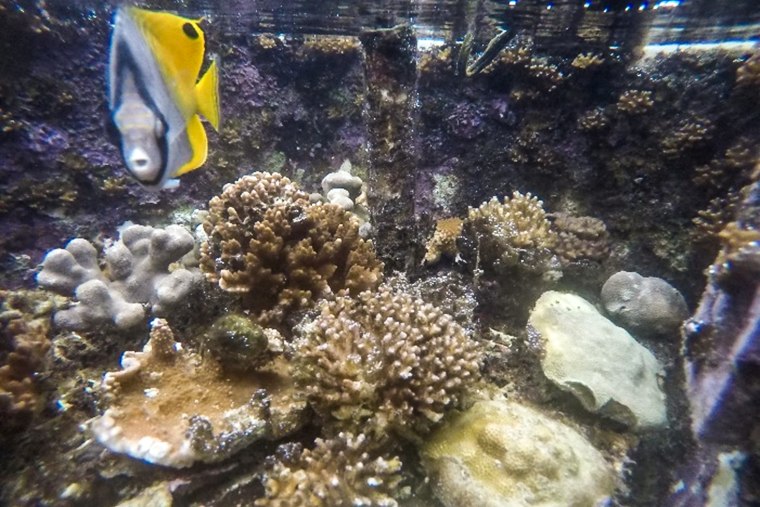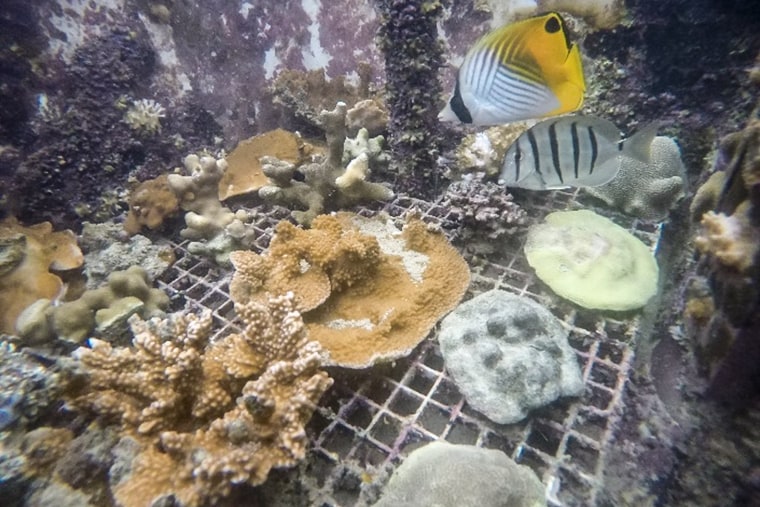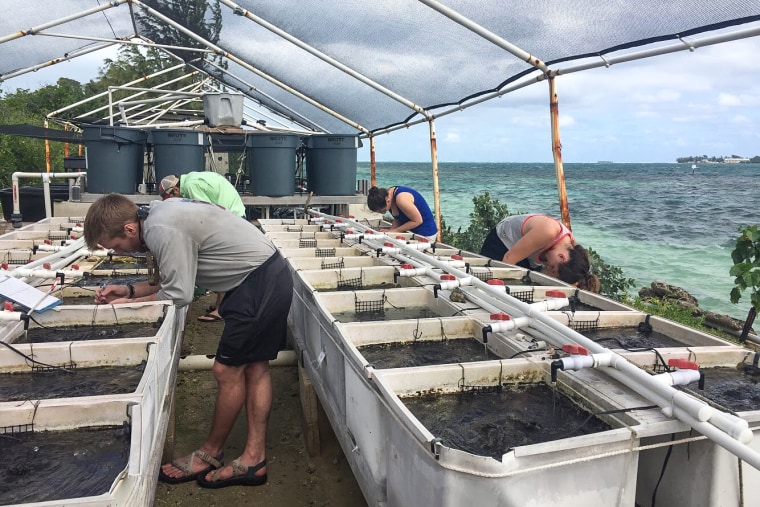Corals, forecast for doom in many future climate scenarios, could be more resilient to rising temperatures and ocean acidification than scientists once thought.
New research, in which scientists spent 22 months studying several types of corals in Hawaii, suggests that several species, absent other stressors, could survive even if the world warms up 3.6 degrees Fahrenheit on average. That temperature mark is the goal for limiting warming that was set by world leaders in the Paris Agreement.
“We’re finding a shred of hope there will be some survivors” if the world warms to Paris levels, said Rowan McLachlan, a postdoctoral researcher at Oregon State University and study author.
The new study, which was published Thursday in the journal Scientific Reports, is unprecedented for its length of observation and for providing an environment as realistic as possible for the corals to live, the authors said.
In recent years, reports from the United Nations’ Intergovernmental Panel on Climate Change about corals have made for dismal and distressing reading. A 2018 report projected more than 99 percent of the world’s corals would be lost if global temperatures rise 3.6 degrees F and that 70 to 90 percent were expected to be lost with 2.7 degrees F of average warming.
“We do find something that’s a bit different than other people have found,” said Andréa Grottoli, an author of the study and a professor in the Earth sciences department at Ohio State University. “Our conditions were more realistic. Maybe there is more resilience out there. It certainly opens up the window to test that more thoroughly.”
To study how corals would react to climate effects over time, researchers designed 40 tanks for coral next to a reef on Coconut Island in Hawaii. The tanks came with all the amenities of a typical reef home, including sand, rubble, fish and crustaceans.
“Having all of those elements in the tank, we’re mimicking the natural environment,” McLachlan said.
Researchers used a hammer and chisel to harmlessly remove tiny pieces of coral from reefs at several sites near Oahu and installed that coral into the tank.
Pumps channeled seawater into the 70-liter tanks to generate a flow and mimic the natural movement of water.
To account for future global warming in some tanks, seawater was heated or treated to be more acidic before it entered the containers.
A quarter of the tanks — the control group — received no treatment, another quarter had temperatures heightened and a third quarter saw acidity raised. Researchers pumped heated seawater that was also more acidic into the remaining 10 tanks.
Anything extra — such as other coral varieties, debris or coral algae — that the pumps sucked into the pipes in addition to seawater was allowed to stay.
“Each tank is its own ecosystem,” McLachlan said.
After 22 months, the scientists took stock of how the corals in each tank were faring.


“In the control tanks, we saw very little mortality,” McLachlan said. “We saw very high growth rate of the coral — growth rates that mimicked what we saw on the reef.”
The similarity in growth suggests that conditions within the tanks were similar to the reality of the nearby reef.
In the tank with hotter and more acidic waters, about half the corals died. Their prospects depended on their species.
Montipora capitata, known as a rice coral, coped poorly. Its survivors were oozing organic carbon, which is a sign of stress.
“They were struggling,” McLachlan said, adding that they might have been sensitive to a lack of zooplankton in the tanks.
The survivors of two species of Porites, which have finger-like features and are known to be a resilient coral, fared well and were growing.
“Not only were they coping, they were thriving,” McLachlan said. “That’s a really shocking result.”
Losing about half of coral cover would have major consequences for Hawaiian reef ecosystems, but it’s still a heartening prospect.
“That’s going to have large consequences for the functioning of reefs and the services reefs provide,” McLachlan said. “In light of what we know about what corals are in for in the future, it’s actually quite hopeful.”
The results have limitations. The study provided results for three major reef-building species in Hawaiian waters, and its findings might not be applicable elsewhere. The study does not analyze the impacts of local stressors like pollution, overfishing, freshwater inundation and disease — key issues that can affect coral absent climate change.
Mary Hagedorn, a research scientist at the Smithsonian Conservation Biology Institute, who was not involved in the research, said the paper makes a strong argument that these Hawaiian corals will be able to survive future ocean conditions from a physiological standpoint.
“But getting there is really the process,” Hagedorn said, adding that it was difficult to predict how corals would react when other environmental problems are layered on top of warming and acidification.
“What will the next 100 years really bring us, in terms of the auxiliary, cascading events?” she said.
More research is needed. Previous studies of corals have been shorter, often just a month in duration.
In part because of its duration, “we feel like our study may be a more realistic interpretation about how corals will do in the future and survive and physiologically acclimatize,” Grottoli said.
Steve Coles, a marine biologist in Hawaii who has continued to study and publish about corals since his retirement, said he was impressed with the quality of the research.
“To keep an experiment going for 22 months, nearly three years, is astounding to me,” Coles said. “That’s unique. I don’t think that’s ever been attempted before.”
Cole published a paper in 2018 that documented other types of corals adapting to climate change.
The results of these studies “are definitely running against the grain,” Coles said. “We’re finding corals are more resilient than we thought they’d be.”
